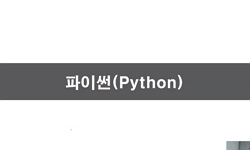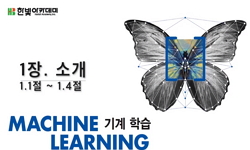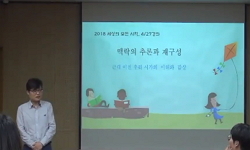위협평가는 전장상황을 인지하여 아군의 자산을 보호하고 무장 할당의 효율적 의사결정에 도움을 줄 수 있는 기술로서, 교전을 실시할 트랙들에 대한 우선순위를 결정하는 알고리즘이다. ...
http://chineseinput.net/에서 pinyin(병음)방식으로 중국어를 변환할 수 있습니다.
변환된 중국어를 복사하여 사용하시면 됩니다.
- 中文 을 입력하시려면 zhongwen을 입력하시고 space를누르시면됩니다.
- 北京 을 입력하시려면 beijing을 입력하시고 space를 누르시면 됩니다.
https://www.riss.kr/link?id=A99668296
- 저자
- 발행기관
- 학술지명
- 권호사항
-
발행연도
2012
-
작성언어
Korean
-
주제어
위협평가 ; 베이지안 네트워크 ; 위협치 ; 추론 ; 기계학습 ; threat evaluation ; bayesian network ; threat value ; inference ; machine learning
-
등재정보
KCI등재
-
자료형태
학술저널
- 발행기관 URL
-
수록면
715-721(7쪽)
-
KCI 피인용횟수
5
- 제공처
-
0
상세조회 -
0
다운로드
부가정보
국문 초록 (Abstract)
위협평가는 전장상황을 인지하여 아군의 자산을 보호하고 무장 할당의 효율적 의사결정에 도움을 줄 수 있는 기술로서, 교전을 실시할 트랙들에 대한 우선순위를 결정하는 알고리즘이다. 즉, 다 표적 교전상황에서의 신속한 의사결정을 도와 아군의 피해를 최소한으로 하고 적군에 대한 공격을 최대한으로 하는 것을 목적으로 한다. 위협평가에 이용되는 위협치 산출은 전장에서 발생하는 센서 데이터들을 통해 연산된다. 그러나 전장상황은 예측 불허하고 다양한 변수가 일어날 가능성이 높으므로 이러한 데이터들의 변질 및 유실은 위협평가를 통한 의사결정에 혼란을 더할 수 있다. 그러므로 본 논문에서는 불완전한 몇 몇 데이터만을 가지고도 신뢰도 높은 결과를 산출하는 데 유리한 베이지안 네트워크의 추론기능과 전장 환경변화에 네트워크의 적응을 가능하게 해주는 학습기능을 위협평가 분야에 적용하여 보다 견고한 위협치를 산출할 것을 제안하여 실험을 통해 이에 대한 성능을 입증하였다.
다국어 초록 (Multilingual Abstract)
A threat evaluation is the technique which decides order of priority about tracks engaging with enemy by recognizing battlefield situation and making it efficient decision making. That is, in battle situation of multiple target it makes expeditious de...
A threat evaluation is the technique which decides order of priority about tracks engaging with enemy by recognizing battlefield situation and making it efficient decision making. That is, in battle situation of multiple target it makes expeditious decision making and then aims at minimizing asset’s damage and maximizing attack to targets. Threat value computation used in threat evaluation is calculated by sensor data which generated in battle space. Because Battle situation is unpredictable and there are various possibilities generating potential events, the damage or loss of data can make confuse decision making. Therefore, in this paper we suggest that substantial threat value calculation using learning bayesian network which makes it adapt to the varying battle situation to gain reliable results under given incomplete data and then verify this system’s performance.
목차 (Table of Contents)
- 요약
- Abstract
- 1. 서론
- 2. 관련연구
- 3. 제안하는 방법
- 요약
- Abstract
- 1. 서론
- 2. 관련연구
- 3. 제안하는 방법
- 4. 실험 및 평가
- 5. 결론 및 향후 연구
- References
참고문헌 (Reference)
1 Jong Min Yun, "The Study of Threat Evaluation using Threat Evaluation Parameter and Fuzzy on Air Defense of Army" 21 (21): 228-229, 2011
2 Sean Borman, "The Expectation Maximization Algorithm: A short tutorial"
3 Subrata Das, "Situation Assessment via Bayesian Belief Networks" 1 : 664-671, 2002
4 Sungwon Jung, "Reducing Uncertainty of Bayesian Networks by Reducing Variances of Probability Distributions" 33 (33): 238-243, 2006
5 Cheol-ho, kim, "National defense IT technology trends and future changes in the battlefield environment" 41-48, 2009
6 Hak-yong, Han, "Introduction of pattern recognition" Hanbit media 2009
7 Jun-hyeng choi, "Bayesian Model for Probabilistic Unsupervised Learning" 11 : 849-854, 2011
8 Bo Thiesson, "Accelerating EM for large database" 45 : 279-299, 2001
9 Kevin Murphy, "A Brief Introduction to Graphical Models and Bayesian Networks"
1 Jong Min Yun, "The Study of Threat Evaluation using Threat Evaluation Parameter and Fuzzy on Air Defense of Army" 21 (21): 228-229, 2011
2 Sean Borman, "The Expectation Maximization Algorithm: A short tutorial"
3 Subrata Das, "Situation Assessment via Bayesian Belief Networks" 1 : 664-671, 2002
4 Sungwon Jung, "Reducing Uncertainty of Bayesian Networks by Reducing Variances of Probability Distributions" 33 (33): 238-243, 2006
5 Cheol-ho, kim, "National defense IT technology trends and future changes in the battlefield environment" 41-48, 2009
6 Hak-yong, Han, "Introduction of pattern recognition" Hanbit media 2009
7 Jun-hyeng choi, "Bayesian Model for Probabilistic Unsupervised Learning" 11 : 849-854, 2011
8 Bo Thiesson, "Accelerating EM for large database" 45 : 279-299, 2001
9 Kevin Murphy, "A Brief Introduction to Graphical Models and Bayesian Networks"
동일학술지(권/호) 다른 논문
-
분산형 저류시설-하수관망 네트워크 시스템의 입자군집최적화 기반 모델 예측 제어
- 한국지능시스템학회
- 백현욱(Hyunwook Baek)
- 2012
- KCI등재
-
비대칭적 유사도 기반의 심볼릭 객체의 계층적 클러스터링
- 한국지능시스템학회
- 오승준(Seung-Joon Oh)
- 2012
- KCI등재
-
주성분 분석법과 선형판별 분석법을 이용한 최적화된 방사형 기저 함수 신경회로망 분류기의 설계
- 한국지능시스템학회
- 김욱동(Wook-Dong Kim)
- 2012
- KCI등재
-
지능형 보안 시스템을 위한 다중 물체 탐지 및 추적 알고리즘
- 한국지능시스템학회
- 시란얀(Lan Yan Shi)
- 2012
- KCI등재
분석정보
인용정보 인용지수 설명보기
학술지 이력
| 연월일 | 이력구분 | 이력상세 | 등재구분 |
|---|---|---|---|
| 2023 | 평가예정 | 재인증평가 신청대상 (재인증) | |
| 2020-01-01 | 평가 | 등재학술지 선정 (재인증) |  |
| 2019-12-01 | 평가 | 등재후보로 하락 (계속평가) |  |
| 2016-01-01 | 평가 | 등재학술지 선정 (계속평가) |  |
| 2015-12-01 | 평가 | 등재후보로 하락 (기타) |  |
| 2011-01-01 | 평가 | 등재학술지 유지 (등재유지) |  |
| 2009-01-01 | 평가 | 등재학술지 유지 (등재유지) |  |
| 2008-02-20 | 학술지명변경 | 한글명 : 한국퍼지및지능시스템학회 논문지 -> 한국지능시스템학회 논문지외국어명 : 미등록 -> Journal of Korean Institute of Intelligent Systems |  |
| 2008-02-18 | 학회명변경 | 한글명 : 한국퍼지및지능시스템학회 -> 한국지능시스템학회영문명 : Korea Fuzzy Logic And Intelligent Systems Society -> Korean Institute of Intelligent Systems |  |
| 2007-01-01 | 평가 | 등재학술지 유지 (등재유지) |  |
| 2005-01-01 | 평가 | 등재학술지 유지 (등재유지) |  |
| 2002-01-01 | 평가 | 등재학술지 선정 (등재후보2차) |  |
| 1999-07-01 | 평가 | 등재후보학술지 선정 (신규평가) |  |
학술지 인용정보
| 기준연도 | WOS-KCI 통합IF(2년) | KCIF(2년) | KCIF(3년) |
|---|---|---|---|
| 2016 | 0.62 | 0.62 | 0.63 |
| KCIF(4년) | KCIF(5년) | 중심성지수(3년) | 즉시성지수 |
| 0.56 | 0.49 | 0.866 | 0.2 |




 ScienceON
ScienceON DBpia
DBpia






